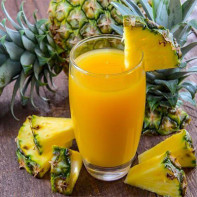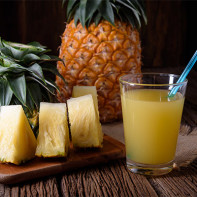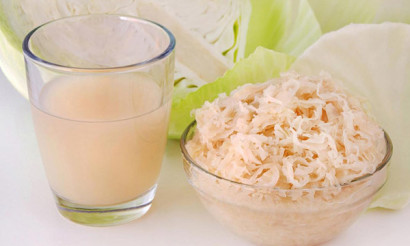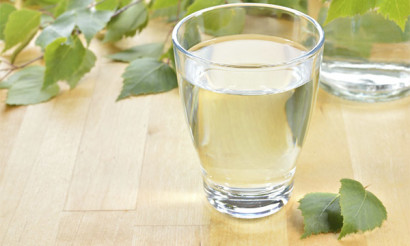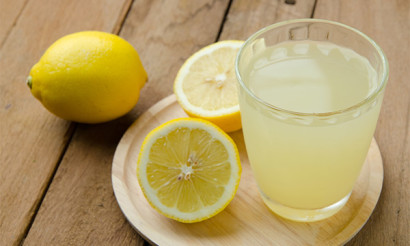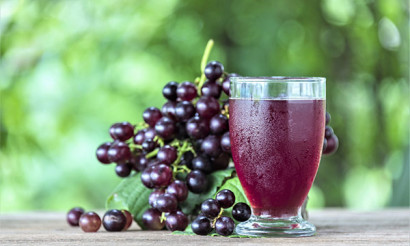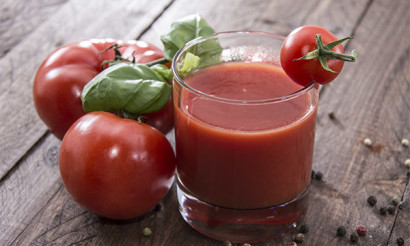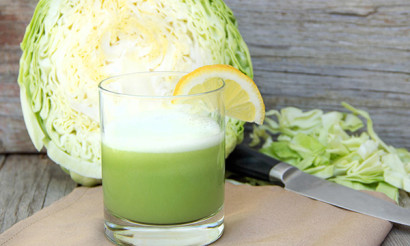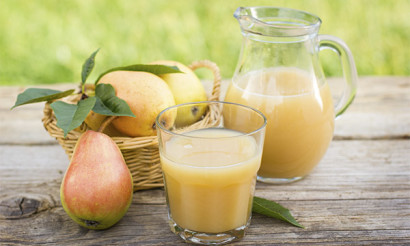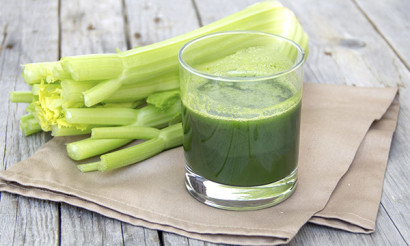Pineapple juice: useful properties and contraindications
Pineapple juice is a unique product containing many water-soluble vitamins, as well as the enzyme bromelain. It participates in lipid metabolism and is an indispensable product in the diet of people with excess body weight.
- Composition and calories
- What is the usefulness of pineapple juice
- General benefits
- For Women
- For Men
- In Pregnancy
- Breastfeeding
- For children
- For weight loss
- Pineapple juice in medicine
- Harm and Contraindications
- How to Choose and Store
- How to Make Pineapple Juice: Recipes
- Non-alcoholic cocktails with pineapple juice
- "Pink Dunes"
- "Yellow Bird"
- "Mottled Fruit"
- Alcoholic cocktails with pineapple juice
- "Azure Hawaiian Islands"
- "Cuban"
- "Pina Colada"
- Interesting facts about pineapples
Composition and calories
The caloric value of pineapple juice is 50 kcal per 100 g of product.
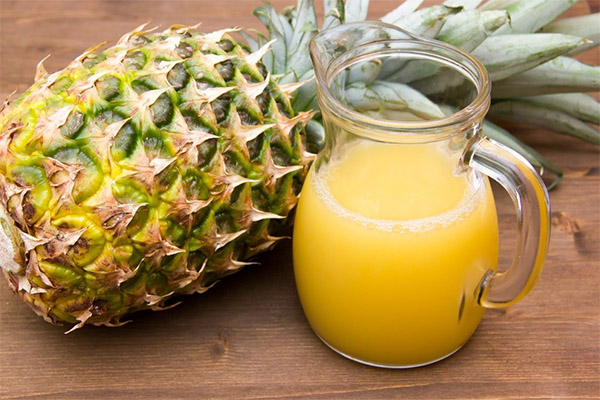
The composition of the product is quite diverse and includes the following macronutrients:
- proteins - 0.3 g;
- lipids - 0.1 g;
- carbohydrates - 11.8 g
- fiber - 1 g;
- water - 85 g.
In addition to macronutrients, the product contains micronutrients - vitamins and minerals:
- retinol - 6.7 mg;
- thiamine - 0.06 mg;
- riboflavin - 0.02 mg;
- ascorbic acid - 11 mg;
- tocopherol - 0.20 mg;
- nicotinic acid - 0.27 mg;
- potassium - 134 mg;
- calcium - 17 mg;
- magnesium - 13 mg;
- phosphorus - 8 mg;
- iron - 0.3 mg.
How useful is pineapple juice
General benefits
The benefits of pineapple juice have been proven by numerous scientific studies. This is mainly due to the exceptional chemical composition.
Useful properties of the drink:
- The composition of the original product includes a unique enzyme - bromelain, which is found exclusively in pineapples and has an active physiological effect on the body. The enzyme participates in the breakdown processes of lipid molecules and regulates fat metabolism. Due to this function, pineapple juice has an active fat burning effect and is recommended for people who are overweight. Also this component has a positive effect on the digestive process, relieves spasmodic pain in the digestive tract and destroys pathogenic intestinal microflora.
- Due to the content of B vitamins in the product, the drink has a positive effect on the central nervous system, stimulates the transmission of nerve impulses and improves memory. This function determines the optimality for use during the study of large amounts of information.
- The presence of vitamin C in the product gives it an immunostimulatory function. During the cold season, it is recommended to add a glass of freshly squeezed juice to the daily diet to improve the overall resistance of the body.
- The product has an antihistamine effect and is also able to reduce blood cholesterol levels. Thanks to this reduces the risk of cardiovascular disease.
- In folk medicine, pineapple juice lotions are widely used in the treatment of sprains and injuries. This is due to the anti-edematous function of the product, as well as its pronounced analgesic effect.
- Juice helps reduce the symptoms of motion sickness on long flights and trains.
- The product's antibiotic properties have been proven, allowing it to be used for colds.
Also, in addition to the general positive properties listed above, pineapple juice has unique benefits for both sexes.
For women
The drink is able to reduce pain during menstruation by reducing the swelling of the genital mucosa. The antioxidant composition of the product can reduce the risk of breast cancer, as well as normalize the body's reproductive function. Calcium and phosphorus present in the composition regulates the renewal of bone tissue. The presence of ascorbic acid helps to cope with skin rashes, and its external use gives the effect of light exfoliation, brightens and refreshes the skin.
For men
Since the male body is more susceptible to heart disease, experts recommend including pineapple juice in your daily diet to reduce the risk of developing such pathologies. In addition, the product has a positive effect on male potency, increasing the productivity and duration of sexual intercourse. Folic acid, which is part of the product, improves reproductive function by activating the production of estradiol, which is responsible for successful conception.
When pregnant.
Including this product in the diet of pregnant women has an extremely positive effect on the fetus. For each of the trimesters, there are especially important factors.
In the first trimester, the fruit drink will help to cope with the manifestations of toxicosis. Folic acid, which is present in the product, promotes the correct formation of the neural tube of the fetus. Ascorbic acid, in its turn, will help to prevent seasonal diseases, since the first trimester is the most dangerous in terms of the development of fetal pathologies.
In the second trimester the antihistamine effect of pineapple components will help to cope with swollen limbs. Dietary fibers that are present in the fetal pulp will facilitate the process of defecation and reduce the risk of hemorrhoids.
During the third trimester, pineapple juice will help control weight gain due to the content of the active enzyme - bromelain. This will make up for the lack of vitamins and minerals necessary for the development of the child, as well as not be afraid of gaining extra pounds. In the last trimester, there is a risk of diabetes in pregnant women with improper consumption of carbohydrates, namely sucrose. And even in the presence of this disease drink is not excluded from the diet, but on the contrary - serves as an excellent substitute for sweet fruit (bananas, tangerines, oranges).
When breastfeeding
Pineapple is among the tropical fruits that are recommended to be excluded from the diet during the breastfeeding phase. This is due to the risk of allergic manifestations and individual intolerance of the components. However, due to its rich chemical composition, it is allowed to add it in small quantities. At the same time, it is necessary to ensure full control of the child's condition and at the first symptoms of allergy, completely eliminate its consumption. If there was no reaction, the drink can safely be left in the diet of a nursing mother, respecting the proportion of water dilution of 1:1.
For children
Specialists do not recommend adding the product to a child's diet before he or she reaches the age of three. This is due to the process of formation of the digestive system and reduced acidity of the gastric juice. These factors may cause eating disorders, as well as allergic reactions to components of the product. When a child reaches three years of age, it is recommended to include pineapple in small portions (1 slice - 1 meal) to avoid the symptoms of intolerance of the product.
For weight loss
Pineapple and all its derivatives are the favorite products of nutritionists. The enzyme composition of the product (especially bromelain) helps to optimize the breakdown of fats and proteins in food. This unique function ensures the acceleration of metabolic processes in the body and helps to lose extra pounds. In addition, the enzyme breaks down more harmful cholesterol, which reduces the risk of developing atherosclerosis. The dietary fiber found in the pulp of the fruit increases intestinal peristalsis and helps with hunger, giving the body a feeling of fullness.
Pineapple juice in medicine
Due to the uniqueness of its component composition fruit also found a use in medicine.
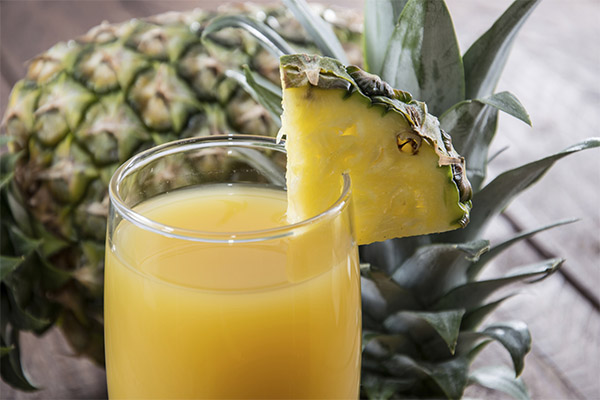
- Anti-viral effect. Thanks to bromelain, pineapple juice has an antibacterial effect on the body, which helps to cope with infectious respiratory diseases.
- Antiedematous action. Components of the fruit block histamine receptors, thereby reducing swelling and dilating blood vessels. This helps to cope with swelling during pregnancy, as well as to relieve the symptoms of rhinitis and sinusitis.
- Reduces inflammation. When the juice is applied externally as compresses, it can relieve inflammation and swelling in diseases of the joints and muscles.
- Reducing the productivity of coughs. The product fights productive cough in diseases of the upper respiratory tract, stimulates expectoration of sputum. Can improve respiratory function in diseases - tuberculosis and pulmonary pneumonia.
- Reduces intoxication of the body. Acting on pathogenic intestinal microflora, pineapple juice can reduce the symptoms of poisoning and optimize the bacterial composition of the small intestine. Also, this property of fruit juice can reduce nausea in toxicosis and cope with the problem of seasickness.
Harm and contraindications
The harm of the product is due to the abundance of biologically active components in its composition, which have a negative effect in the presence of certain diseases and conditions of the body.
- Enzyme enzymes - papain and bromelain, which are present in abundance in the product, can worsen the condition in acute forms of gastrointestinal diseases. Its consumption is especially dangerous for peptic ulcer disease, because the increased acidity of the product can cause increased inflammation of the mucosa of the organ.
- The organic acids of the product can affect the tooth enamel and cause painful sensations in hypersensitive teeth. To reduce the resulting discomfort, it is recommended to neutralize the acids by washing the mouth with baking soda.
- It is not recommended to use unripe fruit during pregnancy, because the fruit can provoke an increase in uterine tone and cause premature birth.
- You should be especially cautious about introducing the product into the diet of allergy sufferers, as well as children under the age of three years because of the possible risk of allergic reactions.
How to choose and store
When choosing, you should give preference to freshly squeezed juices or prepare it yourself with a juicer. Packaged analogues contain in their composition harmful preservatives, they have the properties of accumulating in the liver and contribute to the development of cancer. In addition, the bagged product goes through a technological stage of high temperature processing (pasteurization or sterilization), which kills all pathogenic microflora. However, along with increased shelf life the product loses most of its biological value due to the destruction of most vitamins and organic compounds.
As for storage conditions and terms, if we are talking about a freshly squeezed product, it should be consumed immediately after cooking, since most of the components are destroyed by interaction with air oxygen. As for store-bought copies, you should choose the product with the shortest shelf life, which indicates a more gentle way of canning and greater biological value. The product should be consumed no later than the final date indicated on the package.
How to make pineapple juice: recipes
The recipe for making pineapple juice is incredibly simple. It is necessary to remove the skin from the product, as well as to cut off the leaves. Next, you should cut the fruit into small cubes and place it in a juicer or a blender bowl. Depending on the method, the final consistency of the product will vary. Juicing in a juicer will result in a more liquid and lighter product, while grinding in a blender will leave a mixture of pulp, and the color will be cloudier.
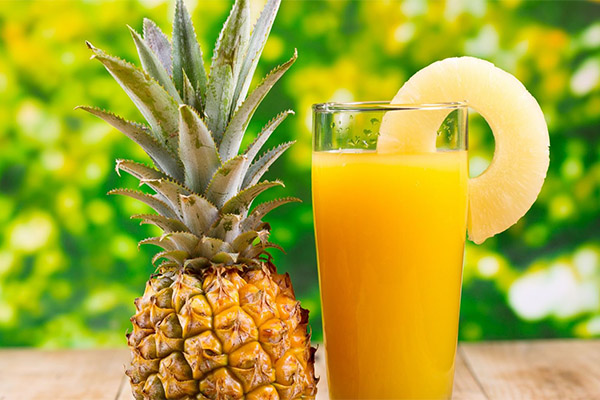
After obtaining the juice to eliminate the tart flavor of the fruit in the resulting mixture should be added 10-15 grams of cane sugar. Stir the mixture until homogeneous. Serve with ice cubes and garnish the glass with a fresh pineapple slice.
Pineapple juice, in addition to consuming on its own, is often part of the summer alcoholic and non-alcoholic cocktails, perfectly quenching thirst and having a low energy value.
Recipes for some of the most popular single-serve cocktails are listed below.
Non-alcoholic cocktails with pineapple juice
"Pink Dunes"
Ingredient mix:
- 250 g pineapple;
- 40 ml of cream (10-20% fat content);
- 1 tsp. grenadine.
Method of preparation of the drink:
- Peel the pineapple from the skin and cut it into cubes.
- Squeeze the juice from the pineapple with a juicer.
- Pour the product into the bowl of a blender, add the cream and grenadine.
- Mix all the ingredients until smooth.
- As an element of decoration, you can add a slice of pineapple on the edge of the glass.
"Yellow Bird."
Ingredients:
- 100 g pineapple;
- 100 g orange;
- 100 g lemon;
- 1 tbsp. coconut syrup;
- 1 tbsp. vanilla syrup.
Making Algorithm:
- Peel the peel from the pineapple and cut the resulting flesh into cubes.
- Remove the peel from the orange and cut it into cubes.
- Peel the lemon and cut the pulp into cubes.
- Place the peeled pulp in a juicer to make a multifruit juice.
- Pour the juice into a blender or shaker and add the syrups mentioned in the recipe.
- Whisk the products until completely smooth.
- For decoration, you can add ice cubes to the glass and garnish with fruit slices.
"Mottled Fruit."
Cocktail ingredients:
- 120 g pineapple;
- 2 tbsp. 10% cream;
- 1 tbsp. coconut syrup;
- 1 tbsp. strawberry syrup;
- 1 strawberry.
Preparation technique:
- Peel and crush the pineapple.
- Squeeze the pineapple juice from the pulp with a juicer.
- Transfer the juice to a shaker and add the cream and the coconut and strawberry syrup to the bowl.
- Shake until the ingredients are well blended.
- Peel the strawberries from the stalks and cut them into wedges.
- Decorate the glass with the strawberry slices.
Alcoholic cocktails with pineapple juice

"Azure Hawaiian Islands".
Necessary ingredients:
- 30 ml rum;
- 30 ml of Blue Curacao;
- 100 g of ice;
- 150 gr pineapple;
- 20 gr cherries.
Method of preparation:
- Chill a glass in the freezer.
- Peel and dice the pineapple.
- Separate 20 g of pineapple for decoration, and put the rest through a juicer.
- Add the juice to the shaker along with the rum and liqueur. Whisk the contents to fully mix the ingredients.
- In a blender, crush the ice.
- Place the ice cubes in a chilled glass. Pour the contents of the shaker.
- Add pineapple cubes and cherries to the cocktail to improve the appearance.
"Cuban."
Required products:
- 50 ml of rum;
- 25 ml of citrus liqueur;
- 200 g pineapple;
- 30g citrus or fruit syrup;
- 1 tsp. cane sugar;
- 100g ice;
- 2 pcs. cocktail cherries.
Cooking technology:
- Add a spoonful of cane sugar to a pre-cooled glass and pour in fruit syrup until the sugar has dissolved.
- Crush the ice in a blender and transfer to the glass.
- Pour the rum into the glass.
- Juice the pineapple.
- Whisk the remaining ingredients in a shaker and pour the contents into the glass.
- Decorate the finished product with a cocktail cherry.
"Pina Colada."
List of necessary products:
- 30 ml of light rum;
- 200g pineapple;
- 30 ml of coconut liqueur;
- 50g ice;
- 20 g nonfat cream.
Method of preparation:
- Crush the ice with a blender to a fine crumb.
- Peel and slice the pineapple.
- Extract the juice from the pineapple pulp with a juicer.
- Mix all the ingredients in a blender until the mixture is homogeneous.
- For decoration, place the pineapple slice on the rim of the presentation glass.
Interesting facts about pineapple
This unique tropical fruit has been known to mankind since ancient times and is a favorite food of many people in the world because of its unique chemical composition, as well as excellent organoleptic properties.
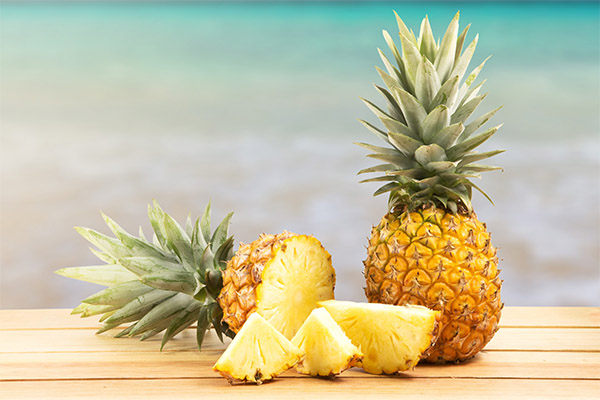
- The country of origin of pineapple is considered to be Brazil. These plants grow both wild and specially cultivated by scientists. In the first year, the plant has a small diameter and height of the trunk (height - 1 m, diameter - up to half a meter), but every year it becomes higher and thicker.
- In all languages, the name of this fruit sounds about the same and is similar in sound to its Russian counterpart. However, in the English translation pineapple sounds like "pineapple", which consists of two words: "pine" - pine needles and "apple" - apple. So in literal translation from English pineapple sounds like "pine apple".
- A series of breeding studies has created more than fifty varieties of fruit, which have the same color and shape, and the weight of the fruit can range from 0.5 to 4 kilograms.
- Pineapple is a natural source of organic acids, minerals and vitamins that have a positive effect on the vital processes of the body.
- Pineapple is a favorite component of dietary diets due to its content of unique enzymes that can break down lipid components of food and reduce body weight.
- The tropical fruit is capable of growing in the wild, but due to the lack of seeds, wild fruits cannot reproduce.
- It is possible to grow the pineapple at home. To do this, you need to cut off the leafy part of the fruit and plant it in the ground. After a while, cut off the top will put down roots, the process of growth of the fruit will begin. Such manipulation can be repeated, following a similar mechanism.
- In the Philippines, the leafy part of the fruit is used to make soft tissue material. The fabric thus obtained is used in the manufacture of underwear, shirts for women and children, sheets, and handkerchiefs.
- In China, the fruit has a special honor. The New Year's table of every Chinese inhabitant must include a dish of pineapple. According to local beliefs, the fruit brings good luck in any endeavor, which will accompany a person throughout the year.
- Breeders in Brazil have puzzled over the difficulty of peeling the fruit. The result of the research was the development of a variety genetically crossed with the tangerine fruit, which does not require peeling and can be broken into slices.
- A dish that includes fresh pineapple, served last, will help stimulate intestinal peristalsis and also speed up the metabolic process. This will allow even with more food eaten and its increased caloric content to maintain a slender figure.
- Softening property of the fruit, due to the presence in the composition of organic acids, can get rid of roughness on the surface of the feet. Also, this property allows you to fight with calloused formations.
- The fruit has a rejuvenating property and fights the excess production of sebum. It is an ideal ingredient for home masks.
- It is impossible to eat a large amount of the product because of its enzymatic components. They begin the process of digestion of the product while it is still in the mouth, which can lead to the formation of ulcerative irritations of the lips and mouth cavity.
- Mature fruit should preferably be eaten immediately or stored for ten days at 5-8°C. If the fruit is immature, it is advisable not to eat it and leave it until it is completely ripe.
- At the beginning of the 19th century, French writer O. de Balzac started building greenhouses to grow the tropical fruit. However, his idea was not a success. Decades later in the Russian Empire they repeated the writer's experience and successfully cultivated pineapples for personal consumption and exported to other countries.
- In Mexico, after eating the pineapple pulp they do not dispose of it, but use it to make a drink of live fermentation. To make it, the rind is poured over with water and left for two days at room temperature. The finished drink is strained and cooled to 5-8° C.
- In Portuguese there is an idiomatic expression "peel the pineapple fruit," which denotes the performance of a difficult task.
- The easiest way to peel a pineapple is to divide it into 4 vertical segments and then cut the flesh into segment parts. Further, using a vertical cut at the peel, you get uniform triangular-shaped parts, convenient for consumption and having an aesthetic appearance.
It is impossible to deny the pronounced positive physiological effect of pineapple juice on the human body. Thanks to the exclusive component composition it is a source of many soluble components, vitamins B, C, A, macronutrients. These components give the juice individual properties, which allows you to regulate almost all the processes in the body. However, as with any other product, its benefits depend directly on the dose of consumption. If it is consumed rationally, this product can have only a positive effect on the body, which makes it indispensable in the diet of a healthy person. The only exceptions are allergic reactions and an acute form of peptic ulcer.
«Important: All information on this site is provided solely for introductory purposes. Consult with a health care professional before using any of our recommendations. specialist before applying any of the recommendations. Neither the editors nor the authors shall be liable for any possible harm caused by materials."


